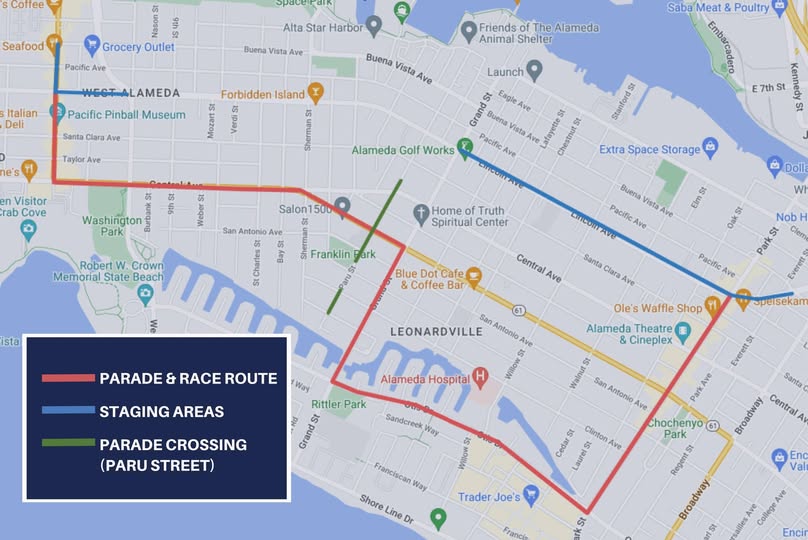Alameda’s much-anticipated Fourth of July parade is set to return this Friday, promising to uphold its reputation as “the longest in the nation.” With a sprawling route of 3.3 miles, the event is expected to attract over 60,000 spectators and will feature more than 150 entries, involving 2,500 participants. This year’s parade marks the 48th annual celebration, showcasing a vibrant mix of equestrians, dance troupes, floats, antique cars, community groups, and both transported and marching bands from local schools, according to the event’s official website.
The announcement comes amid the cancellation of San Jose’s Fourth of July fireworks at Lake Cunningham due to an explosion in Yolo County, highlighting the significance of Alameda’s parade as a key Independence Day event in the region.
Street Closures and Parade Route
Road closures in Alameda will begin at 7 a.m. on Friday, with the Alameda Police Department emphasizing the need for vehicles to be cleared from the parade route and staging areas by 5 a.m. Some streets closer to the staging area will close even earlier, at 6 a.m. The police department has warned that any vehicle parked along the parade route after 5 a.m. will be towed to ensure a smooth procession.
The parade route commences at the intersection of Lincoln Avenue and Park Street. It proceeds along Park Street before turning west onto Otis Drive at South Shore Center, then heads toward Grand Street. The procession takes a right turn at Grand Street, continues down Encinal Avenue to Central Avenue, and finally makes a right on Webster Street before concluding at Lincoln Avenue.
Crossing Points
For those needing to navigate around the parade, there will be designated crossing points at:
- Santa Clara Avenue at Park Street
- Willow Street at Otis Street
- Paru Street at Encinal
- Webster at Central
Parade Start Time and Historical Context
The parade is scheduled to kick off at 10 a.m., maintaining a long-standing tradition that dates back nearly five decades. The event has grown significantly over the years, both in size and in the diversity of its participants. Originally a modest community gathering, the parade now serves as a major cultural event, drawing visitors from across the Bay Area and beyond.
According to local historians, the Alameda parade is not only a celebration of national pride but also a reflection of the community’s rich history and cultural diversity. Over the years, it has become a platform for various community groups to showcase their talents and heritage, contributing to the vibrant tapestry of Alameda’s social fabric.
Implications and Community Impact
The parade’s return is seen as a significant boost for local businesses, many of which rely on the influx of visitors for increased sales and visibility. Restaurants, shops, and vendors along the parade route anticipate a busy day, with many preparing special promotions and events to attract the festive crowd.
Meanwhile, community leaders express optimism about the parade’s role in fostering local pride and unity. “Events like this remind us of the strength and resilience of our community,” said Mayor Marilyn Ezzy Ashcraft. “It’s a time to come together, celebrate our freedoms, and enjoy the unique spirit of Alameda.”
As the city prepares for this grand celebration, residents and visitors alike are encouraged to plan ahead, especially regarding parking and transportation. With the parade’s extensive reach and expected turnout, early arrival is advised to secure a good viewing spot and to participate in the day’s festivities.
As Alameda gears up for its 48th annual Fourth of July parade, the community’s excitement is palpable, promising a day filled with patriotism, pageantry, and plenty of local charm.
